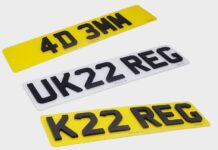The automotive industry has been in a bit of a slump lately, with most people in the USA unable to cruise their local dealerships to see what is on offer. Thus, many manufacturers have decided to forego the middleman altogether, developing online shopping resources to help consumers. With so little hands-on interaction, research becomes extremely important, so car reviews, like those found here, will be your first stop on the path to finding your dream car.
More than facts and figures
It’s not all that difficult to find information online these days, and automakers release brochures for their newest vehicles all the time. However, as much as they would like you to believe that everything on these brochures is factual, a lot of it is just savvy marketing. Sure, you have access to performance specs, like engine options, output figures including horsepower and torque – on rare occasions, acceleration times and top speeds are listed, too – and even a list of all the features you can expect to find, from the base model all the way up to the top-tier trims. But, beyond this, everything is biased.
Every new model claims to be the best at this or that, be it comfort and quality of life features, corner-handling antics, off-road trailblazing, or even something as relatively mundane as fuel economy figures. Then again, this is nothing new to those of us that have been to a few dealerships when on the prowl for a good deal. Everyone is trying to make a sale, so they naturally tell you everything you want to hear, whether it is technically true or not. So, with so much equivocation to deal with, how do you know who to trust? Simply put, you need someone impartial, preferably with a love for cars, but with no personal stake in your decision-making.
However, that doesn’t mean you want cold empirical data on your top options. We all need to know what our potential purchase is going to cost us, both upfront and in the long run, as well as technical information – but that’s not all. We need to know how it feels to be behind the wheel or in the back seat, how easy it is to pack for a weekend away with the family, or that it will keep us safe in the unfortunate event of an accident.
So, what do we need to know?
Basically, what we need is a real human being who has looked at the car from every perspective, driven it themselves, and can convey all the necessary information in a relatable and easy-to-digest manner. Reviews don’t need to be filled with technical jargon or terminology only gearheads will understand, but should present the facts in such a way that you feel confident about the vehicle in question. So, here are some of the top factors you need to ensure are covered by those you trust to guide you through this important decision:
- What different configuration options are available for the model of your choice?
- How much will your top pick cost you to buy, either new or used?
- What kind of gas mileage can you expect, both from the EPA estimates and real-world testing?
- How much power does the engine produce, and how easy is it to modulate the throttle?
- Is the car fun to drive or is it more functional?
- How much passenger and cargo space is available around the cabin?
- What safety features come standard on each trim level?
- Are there enough comfort and convenience features to make driving feel less like a chore?
- Have there been any serious problems with the car or an unusual number of complaints?
- Are there any competitors out there that are worth considering instead?
A picture says a thousand words
Naturally, we all want to actually see what we are buying, so pictures are important. On manufacturer sites, you’ll see stylized photos of vehicles, shot from the best angles in surreal settings. But what you really need to see is how it looks on the pavement or in your driveway. And you need to see everything – the good, the bad, and the ugly. Any review worth its salt should have dozens of pictures, both exterior and interior, and maybe even a few videos for you to watch.
From this, you should get a good idea of the size of the car – height, width, etc – to determine if it is a good fit for your neighborhood and local parking lots. But you’ll also want to see the dimensions of the trunk. It doesn’t really help to have 30 cubic feet of space if you need to be a Tetris grand master in order to actually utilize it. Around the cabin, you’ll want to see the build quality and the layout of the controls, to ensure that you will be comfortable enjoying your car to the fullest.
And, if you are unable to take all of your options for a test drive, you’ll definitely want detailed information on how the competition feels in comparison or, better yet, a video of each car in action. This kind of attention to detail and consideration is what sets the top car review sites apart from the rest.
Ratings and scores
When comparing various options, it can become tedious to make long lists of pros and cons of each potential vehicle yourself – especially if you haven’t had the opportunity to drive the car yourself. Ideally, in-depth evaluations and reviews should be accompanied by simple lists of the best and worst traits of the car in question. And, with thorough reviews, an easy-to-understand scoring system helps to identify strengths and weaknesses too, making comparison even simpler. What better way to develop a shortlist than to know which variants score highest amongst professionals and those in the know? Ranking factors as fuel economy, reliability, safety, and value for money helps with the important decision of whether you’re getting bang for your buck, while scoring of design, performance, and infotainment takes care of the rest.













